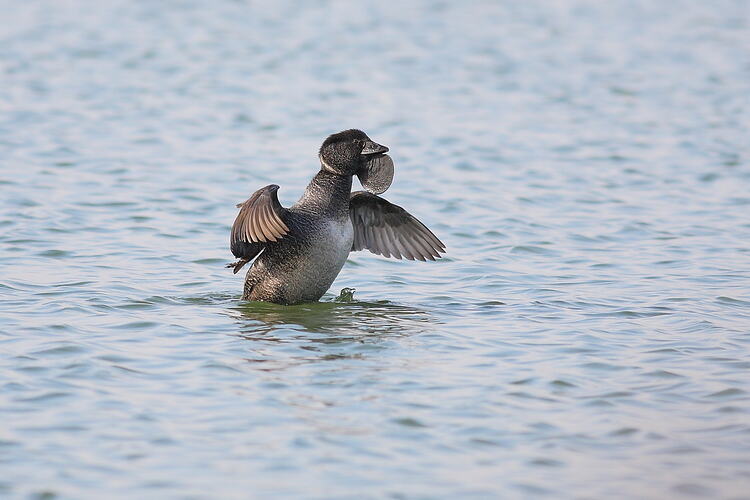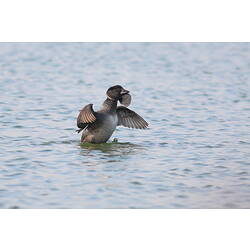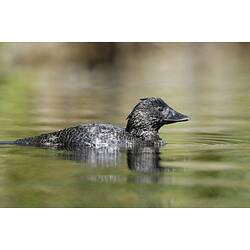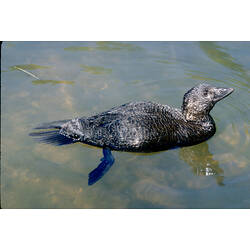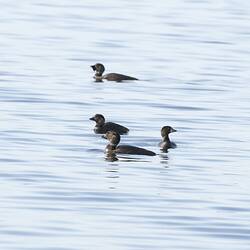General Description
A heavy, wide-bodied duck with uniform dark grey-brown plumage. Plumage of males appears very oily during the breeding season. Bill broad and triangular-shaped, and males have a lobe hanging down under the bill. Long, stiff, rounded tail held flat on the water or bent over the back. Length up to 66 cm for males and 55 cm for females.
Biology
Male Musk Ducks have bizarre displays to attract females: they hold their tail up over their back while splashing the water with their feet and making high-pitched whistling calls. The breeding season is generally from August to November. Females lay one to three eggs, occasionally more, in a low cup-shaped nest. They brood the eggs and raise the young alone without any involvement from the male. Musk Ducks feed mainly on aquatic invertebrates including water beetles, snails and crayfishes.
Distribution
South-western and south-eastern mainland Australia and Tasmania.
Habitat
Terrestrial wetlands, estuaries and sheltered inshore waters, preferring deep water with plenty of aquatic vegetation.
More Information
-
Animal Type
-
Animal SubType
-
Brief Id
A dark-coloured diving duck with a stiff tail and a triangular bill. Musk Ducks sit low in the water.
-
Colours
Grey, Black
-
Maximum Size
66 cm
-
Habitats
-
Diet
Omnivore
-
Diet Categories
Invertebrates, Crustaceans, snails
-
Endemicity
-
Commercial
No
-
Conservation Statuses
CITES: Not listed, FFG Threatened List: Vulnerable, EPBC Act 1999: Not listed, IUCN Red List: Least Concern
-
Taxon Name
-
Common Name
Musk Duck
-
Kingdom
-
Phylum
-
Subphylum
-
Class
-
Subclass
-
Order
-
Family
-
Subfamily
-
Genus
-
Species Name
lobata
